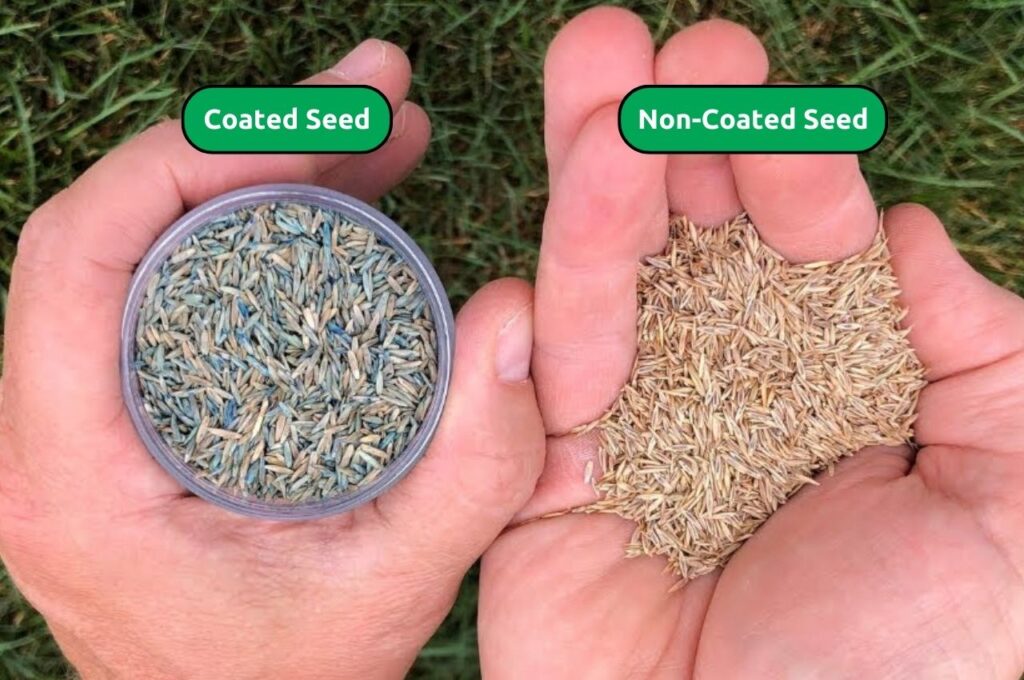One decision you may have to make at some point in your career is whether to opt for coated or uncoated grass seed, each offering distinct advantages depending on the specific requirements of the turf area.

Coated grass seed is enveloped in a protective layer of materials like polymers, fertilizers, and fungicides. This coating retains water, promoting consistent moisture levels critical for germination success. Additionally, the coating often contains nutrients that encourage early seedling and root development. Finally, the fungicides in the coating help prevent damping-off diseases, ensuring a healthier start for the turf. Coated grass seed is typically the best choice for overseeding projects or areas prone to stress, as it provides an added layer of support during establishment. Over 50% of what you pay for can be coating and not seed. This means you have to double the rate to apply the same amount as uncoated seed.
Uncoated grass seed offers a more natural approach to turf establishment. Without any added coatings, uncoated seed relies solely on its inherent qualities for germination and growth. While it may lack the immediate benefits of coated seed, uncoated varieties may be favored in environments where soil conditions are well-controlled and pest pressures are low.

